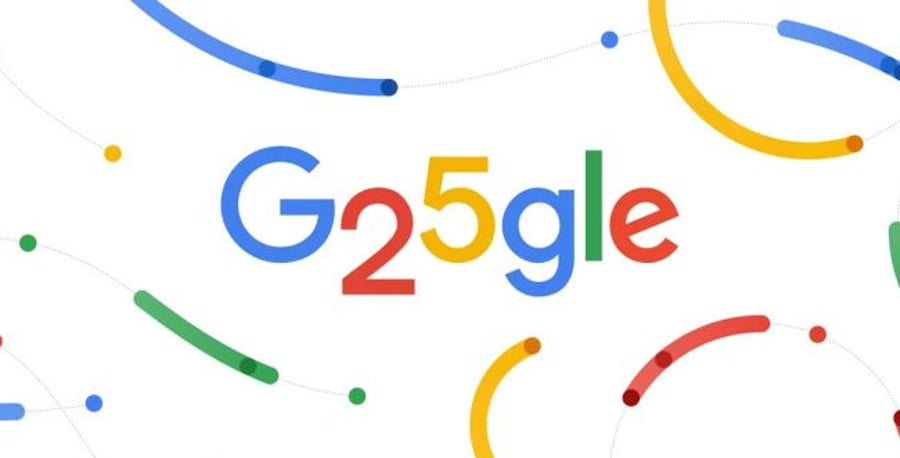
The technology giant Google is celebrating its 25th anniversary today. About 25 years ago, two Jewish students, Larry Page and Sergey Brin, met each other on the campus of Stanford University, where they decided to establish a company that would organize all the world's information and make it accessible and efficient for everyone.
At first, the search engine resided on the server of Stanford University and the company's offices were located in a garage belonging to a friend of the two. It wasn't until March 1999 that they moved to their own office in Silicon Valley.

Google chose to mark this day with a special doodle on its search engine and to present 25 moments that were significant milestones in the company's history. Here are some of them.
The inspiration for creating Google Photos and the tragedy that led to Google News
In 2001, Jennifer Lopez participated in the Grammy Awards, where her Versace dress stunned the attendees and became the most popular query on Google at that time. However, the search results then consisted mainly of links and text, making it challenging for users to find the requested image. This was the moment when Google got inspired to create 'Google Images.'
Another event that occurred in the same year and had a significant impact on the tech giant was the tragic September 11th attacks on the Twin Towers. Following this tragic event, many people struggled to find reliable information during their searches. To address this need, Google launched 'Google News' in 2002, providing links to a variety of articles for real-time news stories.

The launch in honor of the opening of the App Store
In 2008, with the opening of Apple's App Store, the first Google Mobile application was launched on the iPhone. Features like automatic completion and "My Location" made searching easier with fewer keystrokes, particularly on smaller screens.
Another innovation introduced by Google in that same year is the ability to search using voice in the Google Mobile app. With voice search, people can search by simply pressing a button and speaking. Today, voice search is especially popular in India, where the percentage of Indians performing daily voice queries is almost twice the global average.

A concerned mother's suggestion that led to the displaying of emergency numbers
In 2009, following a suggestion from a concerned mother who had trouble finding information about poison control after her child swallowed something potentially dangerous, Google created a box for the poison control hotline at the top of search results. Since then, emergency information displayed in searches related to critical moments, such as preventing suicide, has been expanded.
In 2012, Google introduced the "Knowledge Graph" – a vast collection of interconnected people, places, and things designed to provide quick answers. When searching for names of celebrities, cities, and sports teams, related searches and names of people associated with the search are displayed.

Overload times and flood forecasting models
In 2015, a feature was launched that allows users to see popular times in search and maps to help people see the busiest hours of the day when looking for places like restaurants, shops, and museums. In 2016, they launched Discover, which presents mobile users with content tailored to their interests on the homepage.
In 2018, Google created models for predicting floods to help people better prepare for emergency situations. Initially, the tool was launched in India, and today, with the expanded use of artificial intelligence, flood warnings are available for 80 countries worldwide.

The tool that will help you with a tune stuck in your head
In 2020, Google introduced impressive capabilities with the launch of the ability to hum a tune stuck in your head that you can't remember the full song for. By using the search microphone, Google identifies the tune you hummed and presents potential song matches that you can explore and find information about the song and the performing artist.
In 2022, Google introduced a new way of searching by combining text and images. Now, you can take a picture of a specific product, such as a dining table, and add the query "coffee table" to find a matching table. The feature, initially launched in the United States, is now available worldwide on mobile devices, in all languages, and in countries where Lens is available.





















0 Comments